The Hungry Lamb: Traveling in the Late Ming Dynasty Review - A good read, but a good game?
Read any good games lately?
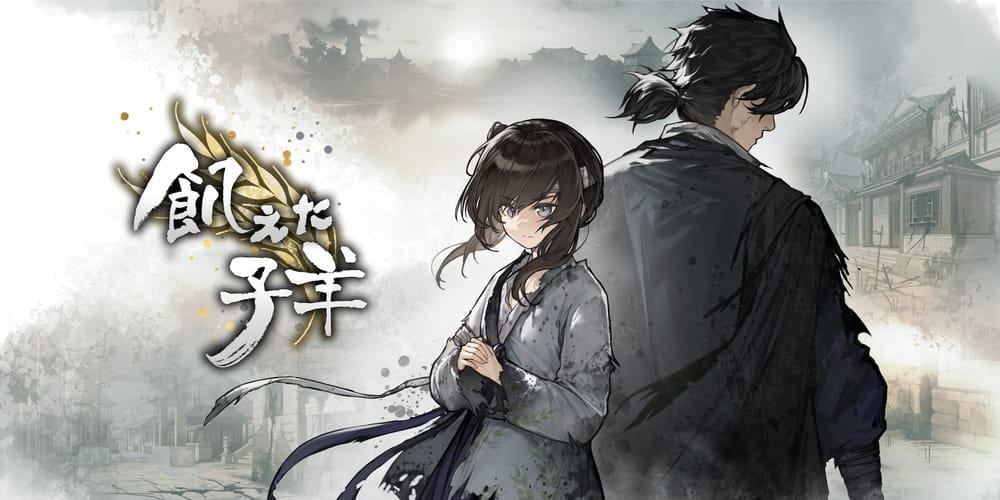
When is a video game not a video game?
It's something I pondered as I "played" (and I use the term loosely) The Hungry Lamb: Traveling in the Late Ming Dynasty!, a visual novel for the Nintendo Switch and PCs that was made by ZerocreationGame (零创游戏), a studio based in Guangzhou, China.
Or maybe the correct verb would be "read," since I spent more of my time with The Hungry Lamb reading than I did pressing buttons or, well, doing anything.
Which isn't to say I didn't have fun...
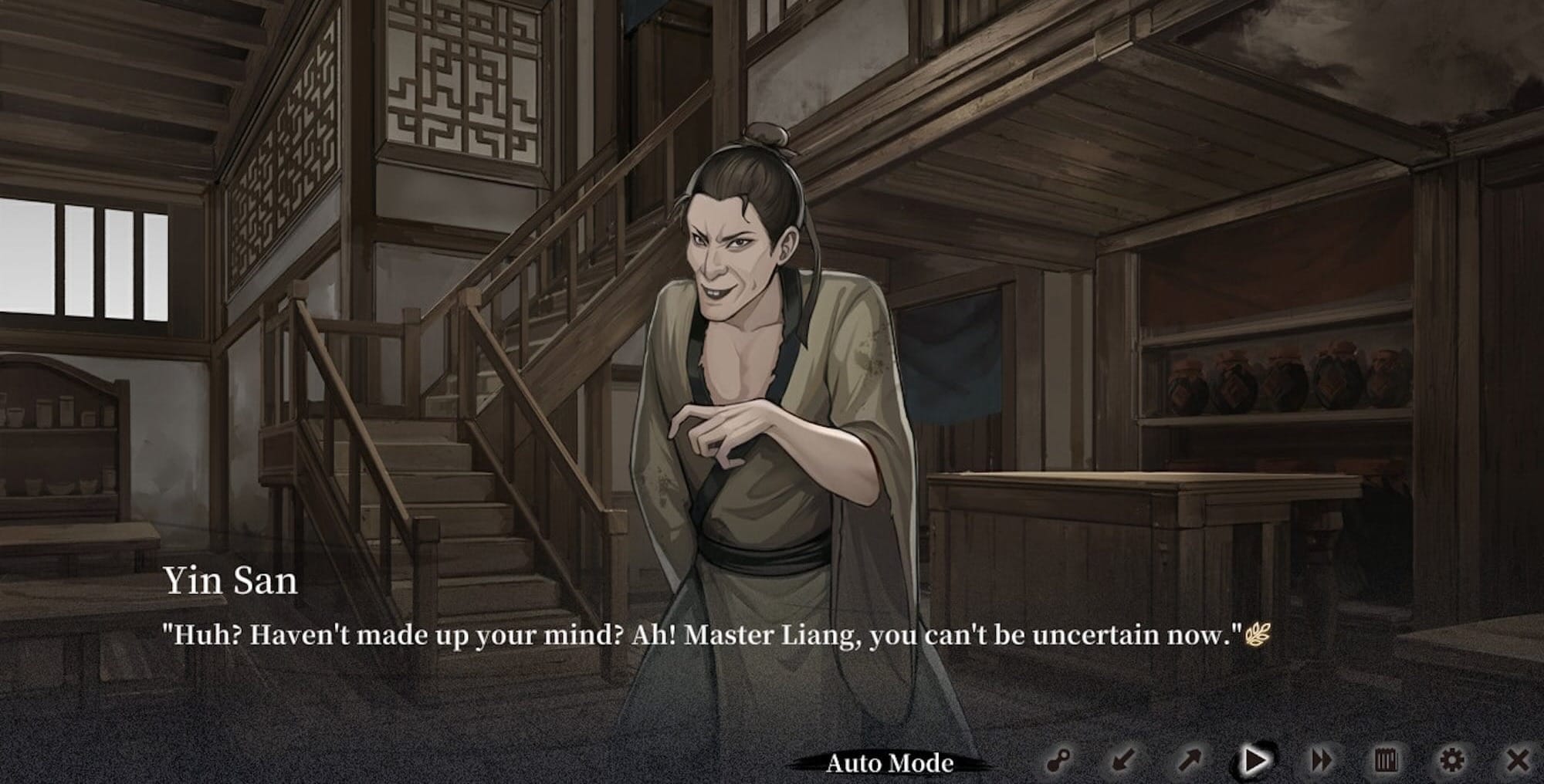
Gameplay and Visuals
For those unfamiliar with the term "visual novel," it's basically like reading a digital version of a graphic novel if every panel was full-page, there were sound effects, and someone read the dialog (but not the rest of the text) out loud. Though in the case of The Hungry Lamb, the dialog is spoken in Chinese, even though the words are written in English.
Or, to put it in video game terms, it's like playing an epic adventure game like Avowed if you cut out the movement and combat, and it was just cutscenes and an occasional dialog choice.
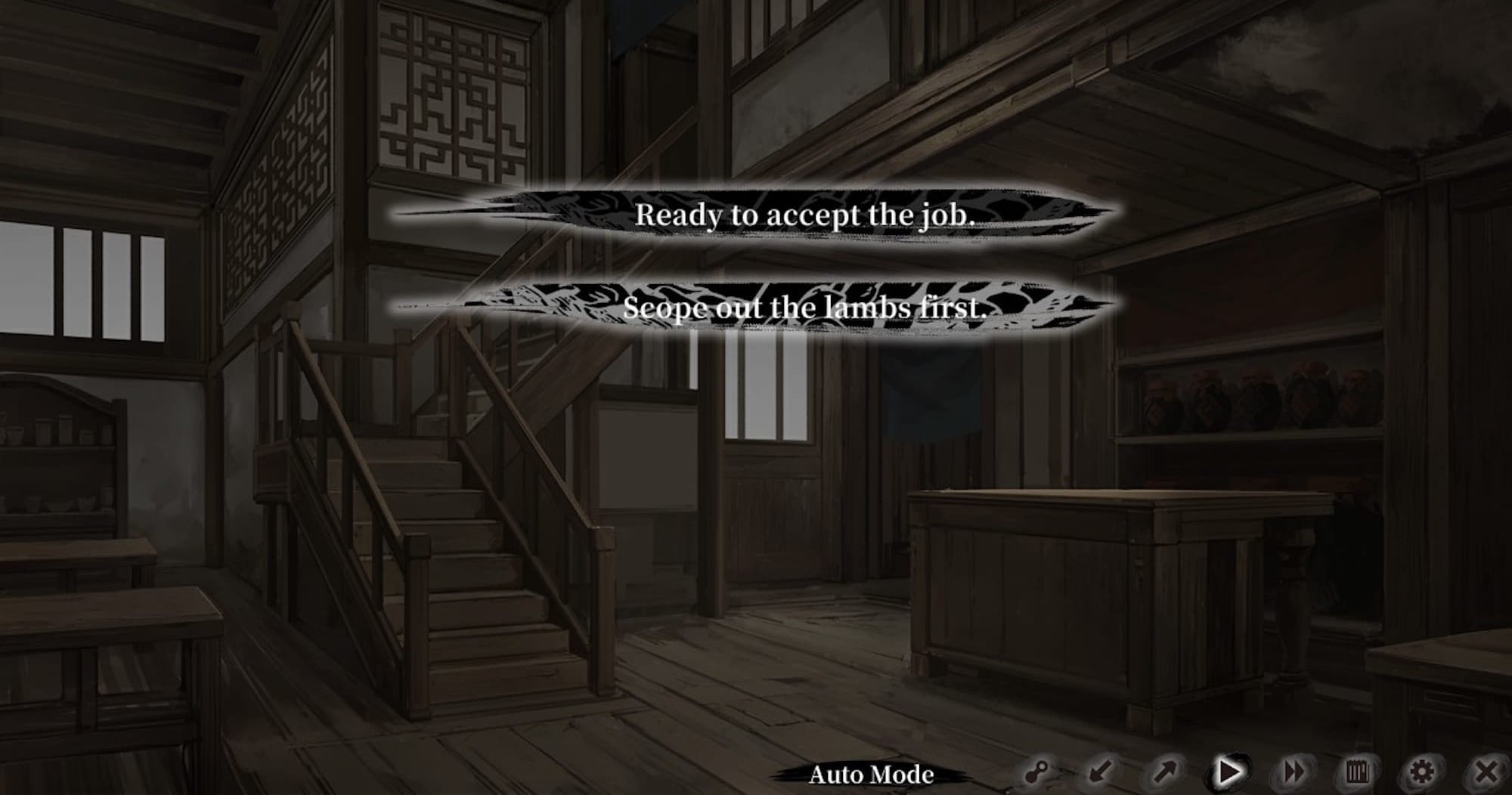
Now, you do have some control over the text itself. You can skip ahead if you want, or, if you miss something, you can bring up a screen that shows who said what. You can't, however, rewind the game and watch an earlier scene again. You also, on occasion, have to make a choice.
Set in China in 1632, The Hungry Lamb: Traveling in the Late Ming Dynasty has you helping a friend escort people to another village. Except your friend isn't a tour guide; he's involved in human trafficking. Though he hates when you frame it like that and, no surprise, thinks he's helping these people out. Hence, he refers to trafficked victims as "lambs," as if anyone would be fooled into thinking he's just shepherding sheep.
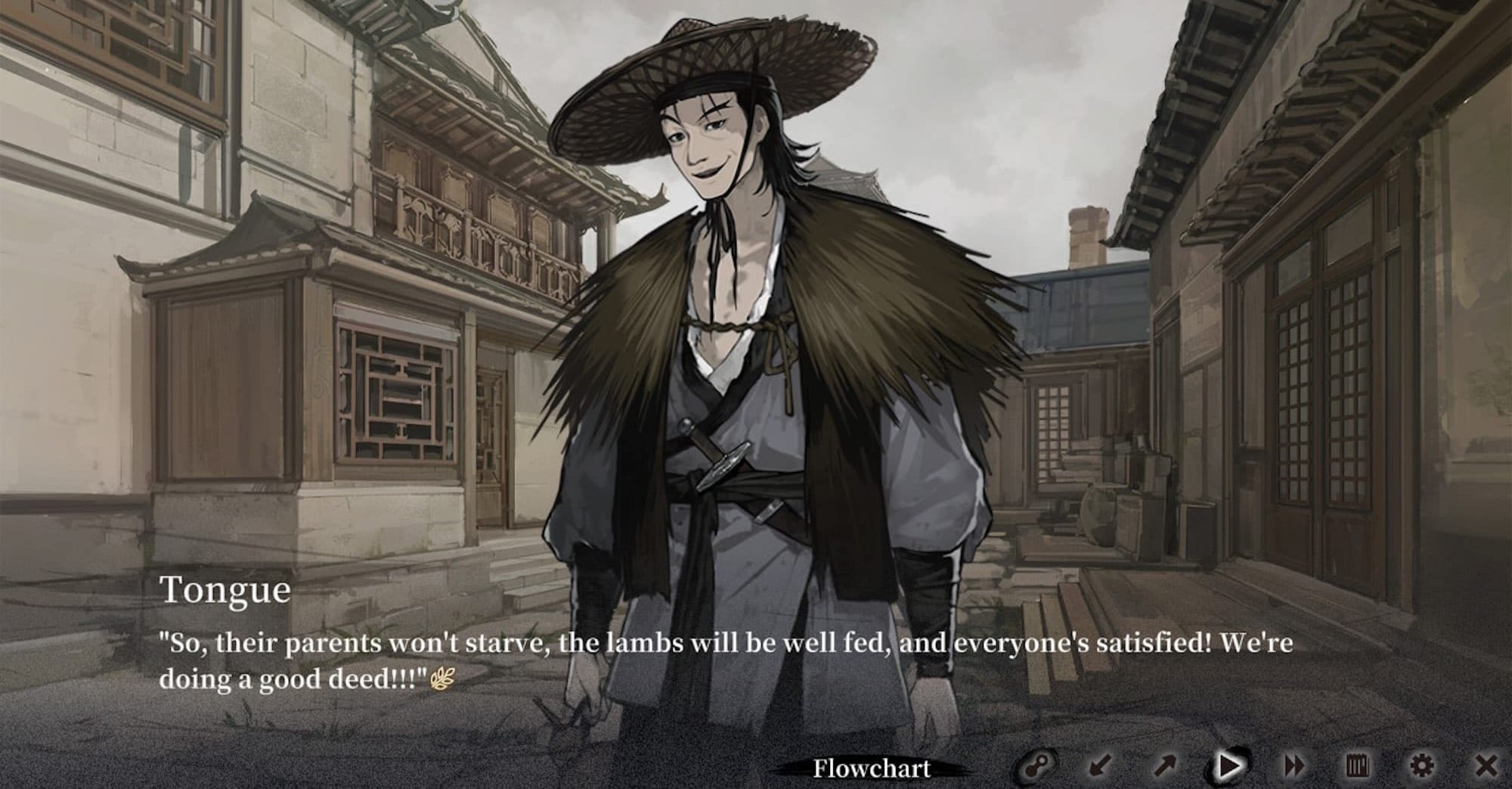
Anyway, after talking to your friend for a while, you're given your first choice in The Hungry Lamb. But no, it's not whether you want help him, walk away, or call the cops on him. It's whether you want to take the job now or look at the people first. Which is how I learned we'd be trafficking some sisters who'd been sold into slavery by their parents, two other young women, and a young boy.
And that, literally, is all you do in a visual novel like The Hungry Lamb. You read and read and read, and occasionally you make a decision before reading some more.
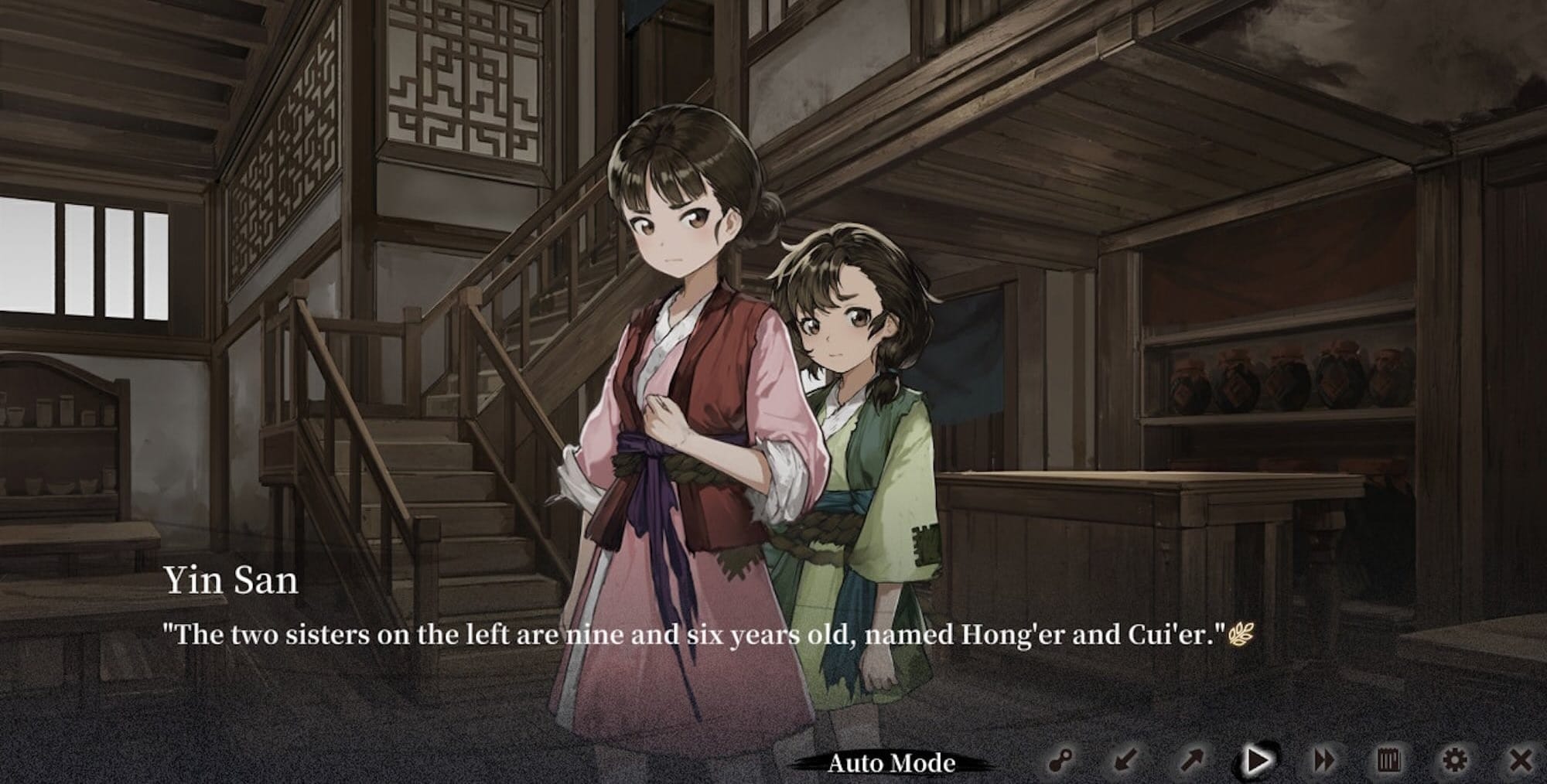
Issues and Irritations
While the idea of a visual novel is interesting, especially to someone who considers himself an avid reader, I still had some issues with The Hungry Lamb: Traveling in the Late Ming Dynasty.
For starters, when I first chose to examine the kids being trafficked, as opposed to just starting the job, it ended up not being much of a choice at all. Granted, it did open up a long section of dialog — or so I assume, it's not like I could go back and make the other choice — but again, the choice was not whether I took the job or not, or called the cops or not, it just whether I wanted to, well, examine the lambs. There was no way out (well, unless I quit the game, of course).
Thankfully, not all of your choices in The Hungry Lamb are as inconsequential as the first one. Or that your journey only ends when you turn off the game. Or finish it.
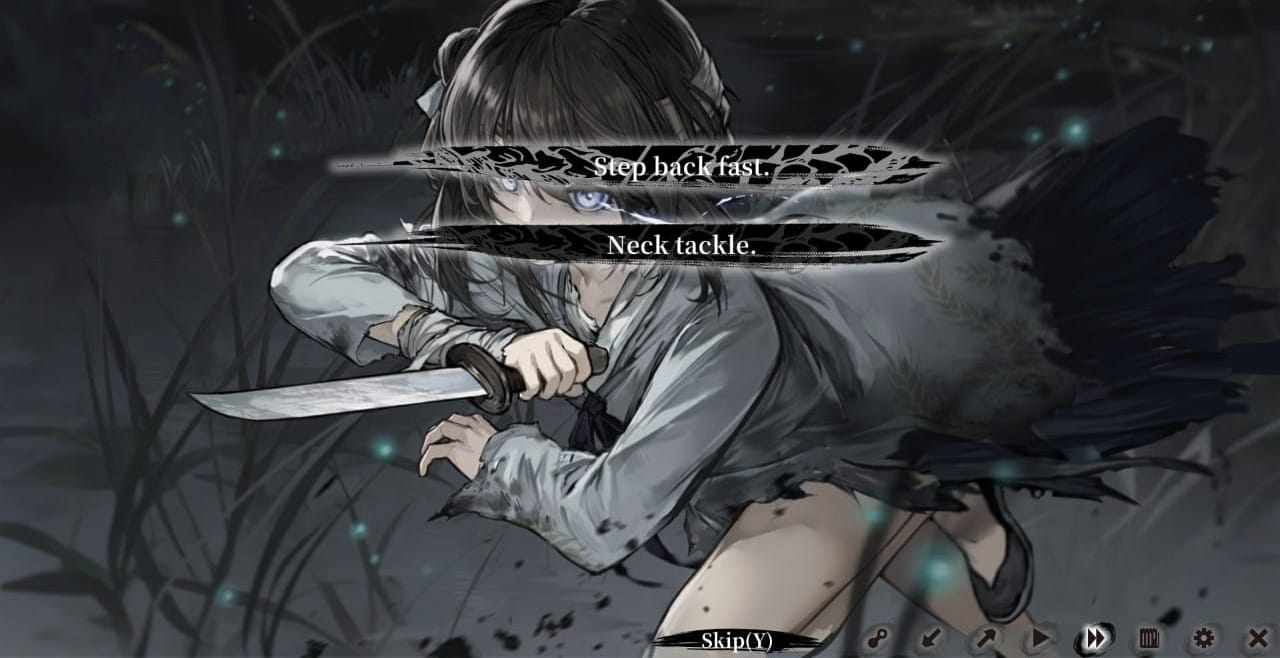
At one point I won't spoil, I found myself attacked by someone with a knife, and was presented with a choice as to how I wanted to handle the situation. Though clearly I chose badly because I was stabbed, and the game ended. Well, for the moment, anyway. All I had to do was reload my saved game, which brought me back to the decision screen, where I decided to handle my attacker differently.
Which brings me to another issue I had with the way The Hungry Lamb is structured. As I said earlier, if you miss something, you can hit a button and bring up a text screen that shows you everything that happened. But you can't rewind the game and watch a previous scene again.
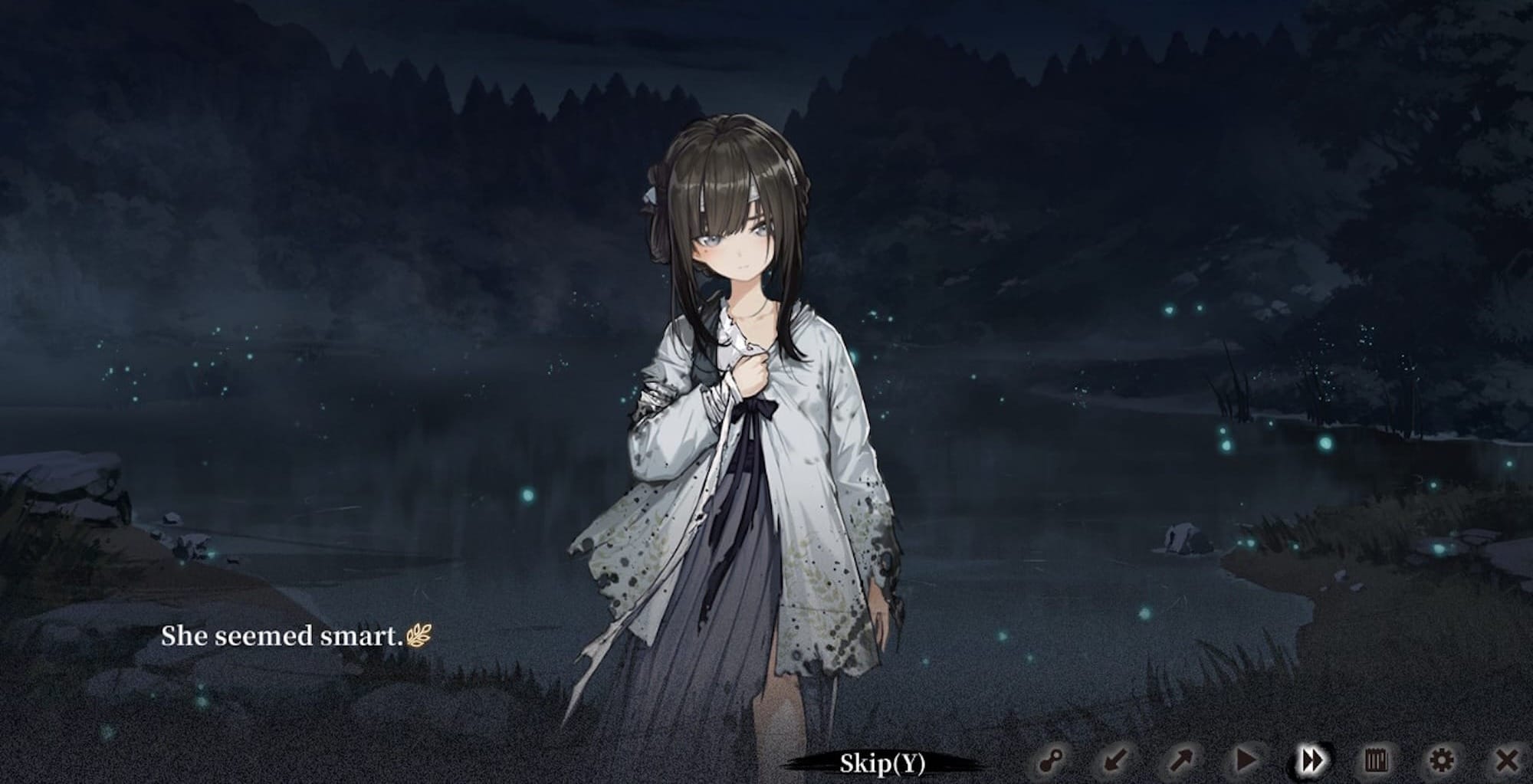
I also found myself wishing the visuals changed more often. Early on, the image was of a forest path. But when the text referenced a specific tree, I expected the view to change to an image of said tree. But it didn't; it stayed with the one of the forest path. And the same was true for the people; their images were often the same, they just superimposed them over different backgrounds.
In another part left unshown, the text mentions that one of the girls being trafficked had tears in her eyes, but they didn't show this; they didn't even show the girl, they just showed the building where I picked them up.
Which, again, doesn't happen when you read a book, but it does happen when you read a graphic novel...
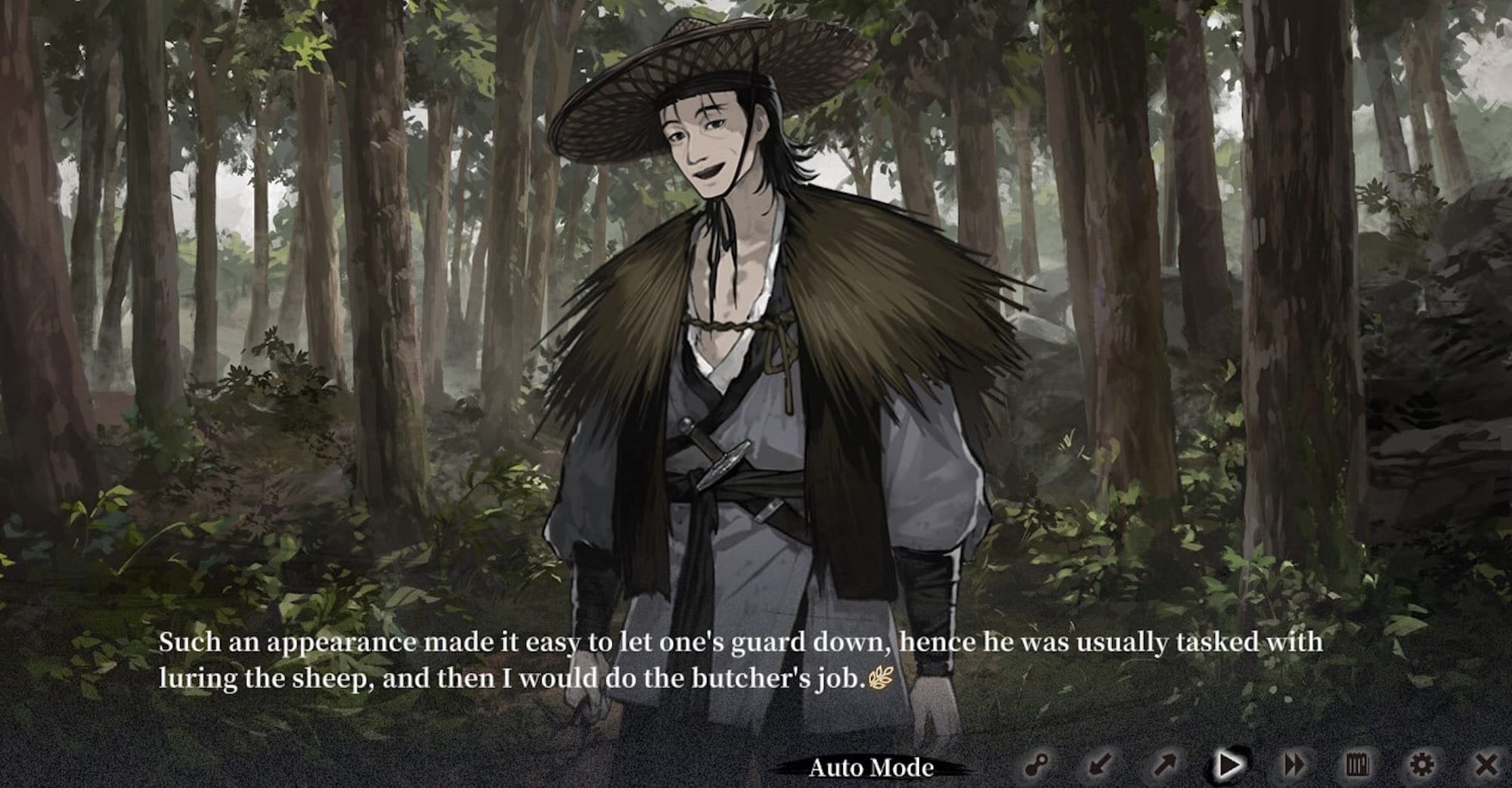
Verdict
Ultimately, though, how I really felt about The Hungry Lamb: Traveling in the Late Ming Dynasty! has more to do with the story it tells than how it tells it. While it is an interesting story, and told well — both in how it's written and how this works — it's not a story I would ever chose to read because I'm much more into science fiction than historical fiction.
Sure, I would've preferred more variety in the visuals, a rewind function, as well as more (and more impactful) choices, but as is, The Hungry Lamb was only ever a good read...and not for me. ZerocreationGame

A copy of The Hungry Lamb: Traveling in the Late Ming Dynasty! for Nintendo Switch was provided for review by ZerocreationGame.





